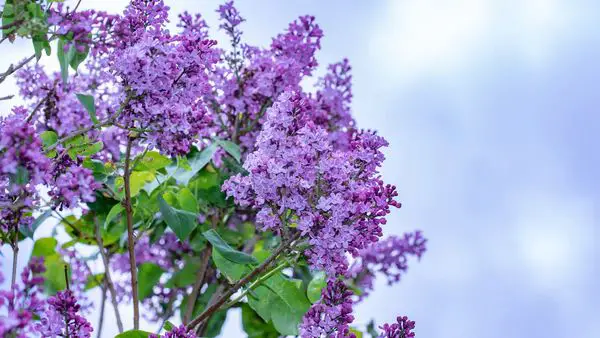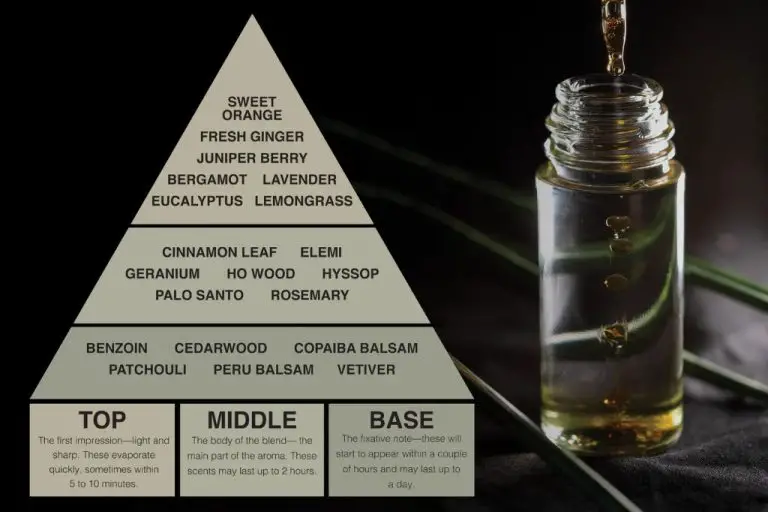What Oil Is Extracted From Orange Blossoms?
What Are Orange Blossoms?
Orange blossoms are the fragrant white flowers that bloom on orange trees (Citrus sinensis). The blossoms have five petals and grow in clusters directly from the branches and trunk of the tree. They have a delicate, sweet smell reminiscent of the orange fruit.
Orange blossoms are native to southern China, India, and Southeast Asia. They grow best in warm, tropical climates with high humidity. In their native regions, orange trees bloom in the spring. Orange blossoms can also be found in the subtropical climates of the Mediterranean region and in Florida and California where oranges are commercially grown.
To cultivate orange blossoms commercially, orange trees are propagated from cuttings and grown in orchards optimized for citrus production. The trees begin blooming after 3-4 years. Commercial orange growers often rely on honeybee pollination for a successful orange crop. The orange blossoms produce small green fruits that gradually ripen into full sized oranges over 6-8 months after the flowers bloom.
References:
https://specialtyproduce.com/produce/Orange_Blossoms_8808.php
https://en.wikipedia.org/wiki/Orange_blossom
History and Origins
Orange blossom oil, also known as neroli oil, has a long history of use dating back thousands of years. The ancient Egyptians were one of the first cultures to produce orange blossom oil as early as the days of Cleopatra. They used it for its alluring fragrance as well as for medicinal purposes like reducing fever. The oil was considered sacred by the Egyptians and a symbol of good health and happiness.
Other ancient cultures that traditionally used orange blossom oil include the Arabs, who brought the bitter orange tree to Europe in the Middle Ages as noted by Bon Parfumeur (https://www.bonparfumeur.com/blogs/journal/orange-blossom-in-perfumery). The oil became popular among European nobility in the 17th century. By the Victorian era, it was a coveted ingredient in many perfumes.
Historically, orange blossom oil was used for its medicinal properties to treat a variety of ailments. It was thought to calm the heart, reduce inflammation, and promote restful sleep. The soothing floral aroma made it useful for relieving anxiety and lifting the mood. Orange blossom oil was also incorporated into skincare routines as a skin nourisher.
The oil held ceremonial significance as well. Orange blossoms were popular adornments at weddings to symbolize purity, innocence, and fertility.
Extraction Process
Orange blossom oil is extracted through a process called enfleurage, which involves extracting the fragrant compounds from the fresh blossoms into vegetable fats or oils. The blossoms are placed on glass sheets coated with a thin layer of fat or oil, and as the blossoms wilt, the fragrance is absorbed into the fat or oil. This process is repeated until the fat or oil is saturated with the fragrance. The fat or oil is then washed with alcohol to collect the fragrant oils.
Another common method is solvent extraction, where the blossoms are placed in a solvent like hexane or ethanol to dissolve the essential oils. The solution is then distilled or purified to isolate the fragrant orange blossom oil.
On average, it takes about 1000 lbs of orange blossoms to produce 1 lb of orange blossom concrete. The concrete is further processed to yield about 10-20% orange blossom absolute. So approximately 50-100 lbs of blossoms are needed to produce 1 oz of the precious orange blossom absolute oil.
Sources:
https://www.edenbotanicals.com/orange-blossom-organic-extract.html
https://mossbotanicals.com/blogs/news/the-essence-of-orange-blossom-extract
Chemical Composition
The main chemical constituents in the composition of orange blossom oil are citrus terpenes like limonene and linalool. Linalool makes up anywhere from 60-80% of orange blossom oil and contributes soothing, relaxing properties (Jeannot, 2005).
Other major compounds include citral, nerol, α-terpineol, geraniol, and myrcene, which each make up 3-15% of the oil. Together, these compounds give orange blossom oil its sweet, floral aroma and therapeutic effects like reducing inflammation and anxiety (Jeannot, 2005).
One study analyzed the composition of several samples of orange blossom oil and found 78-80% linalool, 3-5% citral, 2-4% nerol, and 3-4% α-terpineol (Jeannot, 2005). So the high percentage of linalool appears consistent across high quality samples.
The neroliol, geraniol, and citronellol contribute to the oil’s uplifting scent, while myrcene adds a herbal, earthy aroma. Although exact percentages vary by sample, linalool clearly dominates as the primary therapeutic compound (Jeannot, 2005).
Uses and Applications
Orange blossom oil has a variety of uses and applications due to its pleasant floral aroma and therapeutic properties.
In the culinary world, orange blossom oil is used as a flavoring component in desserts, drinks, and entrees. A few drops can add a lovely citrusy floral note to dishes. According to [1], orange blossom oil is commonly used in Mediterranean and Middle Eastern cuisine.
The fragrance industry widely uses neroli oil in high-end perfumes. According to [2], it acts as a natural fixative that helps hold the scent. Neroli is one of the main ingredients in the classic perfume Chanel No. 5. It also makes an appearance in perfumes by Prada, Tom Ford, Viktor & Rolf, and Jo Malone.
For aromatherapy, orange blossom oil promotes relaxation and eases anxiety. The scent is thought to have an uplifting effect on mood. Diluted in a carrier oil, neroli can be massaged into the skin or diffused into the air. However, it should be used sparingly due to the high cost.
Medicinally, orange blossom oil demonstrates antiseptic, antispasmodic, and anti-inflammatory properties. It has traditionally been used to treat headaches, depression, anxiety, and insomnia. However, more research is needed to fully substantiate these benefits.
Cautions and Safety
While orange blossom oil is generally considered safe for topical use, there are some potential side effects and cautions to be aware of:
Skin irritation – Orange blossom oil contains citral and limonene, which can cause skin irritation or allergic reactions in some individuals. Discontinue use if irritation occurs.
Phototoxicity – Orange blossom oil may increase skin sensitivity to UV rays. Avoid sun exposure for 24 hours after applying to skin 1.
Medication interactions – Orange blossom oil can potentially interact with anticoagulants, antihypertensives, and sedative medications. Consult your doctor before using 2.
Pregnant women – Insufficient research on safety for pregnant/nursing women. Exercise caution or avoid use.
Children – Do not use undiluted on children under 5 years old.
Proper storage and handling is important. Store in a cool, dark place in a tightly sealed container. Avoid exposure to light and heat to preserve quality. Do not ingest orally.
Cultivation Challenges
Orange blossom trees face several challenges when cultivated commercially. One major issue is disease, especially huanglongbing (HLB), also known as citrus greening disease. HLB is spread by the Asian citrus psyllid insect and has devastated orange groves in Florida, California, and other citrus-growing regions, significantly reducing yields. Currently, there is no cure for HLB, so prevention methods focus on controlling psyllid populations and removing infected trees (1).
Environmental factors like drought, flooding, frost, and high winds can also damage orange blossom trees and fruit production. Growers use irrigation, windbreaks, and frost protection methods to help mitigate environmental risks. However, extreme weather events are becoming more frequent with climate change (2).
Sustainability efforts are underway to reduce the environmental impacts of orange cultivation. Some tactics include using integrated pest management, improving soil health through cover crops and reduced tillage, and more efficient water use. The goal is to increase productivity while lowering resource use and negative environmental effects.
Sources:
(1) https://www.homesandgardens.com/gardens/mexican-orange-blossom-care-and-growing-guide
(2) https://greg.app/plant-care/choisya-ternata-mexican-orange-blossom
Commercial Production
Morocco and Tunisia are two of the major producers of neroli oil globally (https://en.wikipedia.org/wiki/Neroli). Annual production is estimated to be around 1,000 kgs from Morocco and 3,500 kgs from Tunisia. Italy also produces neroli oil commercially in the Calabria region (https://www.essentialoilscompany.com/products/orange-blossom-absolute).
The market outlook for neroli oil appears positive. Demand has been growing, especially from the cosmetics industry. However, challenges like climate change impacting crop yields remain (https://www.natureinbottle.com/product/neroli_essential_oil). Overall, increasing awareness of aromatherapy and natural ingredients is likely to drive further growth.
Buying Quality Oil
When buying orange blossom oil, it’s important to ensure you are getting a pure, high-quality product. Here are some tips for identifying pure orange blossom oil and avoiding adulterated products:
Look for 100% pure botanical oils from reputable brands like Wholesale Botanics or Trip. Avoid oils that list “fragrance” on ingredients rather than specifying “orange blossom oil.” Pure orange blossom oil should not contain any artificial ingredients or dilutents.
Beware of cheap oils, as true orange blossom oil requires extensive distillation from blossoms. High quality orange blossom oil has a rich, deep aroma. Adulterated oils may smell weak, chemical, or Perfumey.
When possible, look for oils that have been third party tested for purity. Reputable essential oil companies will provide GC/MS test reports verifying the oil’s chemical composition.
Orange blossom oil’s price can vary based on factors like the origin, harvest season, and distillation method. Expect to pay $40-60 or more for a small 5-15ml bottle of therapeutic grade orange blossom essential oil from a trusted supplier.
The Future
There are several promising developments that point to a bright future for orange blossom oil.
In terms of production methods, researchers are exploring new extraction techniques like supercritical CO2 extraction that can yield purer and more potent orange blossom oil (Source). Enzymatic extraction methods are also being developed to extract the oil more efficiently and sustainably.
Exciting new research is uncovering additional health benefits and uses for orange blossom oil. Studies show it has potent antimicrobial and anti-inflammatory properties, making it a promising natural additive for personal care and cleaning products (Source). Its antioxidant and neuroprotective effects are also being investigated.
Culturally, orange blossom oil has been prized for centuries in perfumery and aromatherapy. Its light, sweet, floral scent is expected to remain popular as more people explore natural fragrances. Orange flower water is also commonly used in Mediterranean and Middle Eastern cuisine, pointing to the lasting cultural importance of the orange blossom.
With continued innovation and discovery, orange blossom oil is poised to remain an invaluable, cherished oil long into the future.





